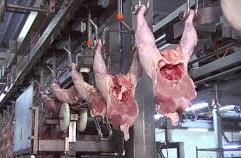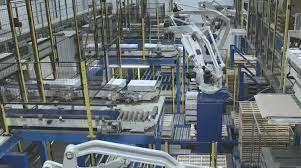Red meat and even poultry processing plants contribute to infection of COVID and other airborne viral infections due to close proximity of workers, high humidity, low temperature, and minimal ventilation rates. The design of U.S. plants and equipment installed was previously predicated on the availability of inexpensive labor. European producers do not have the luxury of an infinite supply of workers, even though temporary immigrant labor is used in some nations including Germany.
|
A recent article evaluating morbidity and mortality in U.S. meat packing plants and communities in which they are located demonstrated the low impact of poultry plants compared to beef and pork facilities. It was calculated that within 150 days after emergence of COVID-19 in a given county, a beef plant increased per capita infection rates in the community by 110 percent and in the case of pork plants by 160 percent. In contrast, the presence of a large poultry processing plant in a county only increased infection rates by 20 percent. The study documented that collectively 334,000 COVID-19 infections were attributable to meat packing plants with mortality and morbidity costs attaining $11.2 billion.
|

Advanced mechanized broiler-portioning installation |
|
The authors note that lost productivity in pork plants attained $336 million, beef, $186 million, and for poultry $40 million. The relatively lower impact associated with poultry processing relates to a higher level of mechanization compared to red meat packing plants. A worthwhile extension of the study would be to examine modern poultry plants with controlled atmosphere stun to kill, automated evisceration lines and mechanical portioning and deboning compared to older facilities requiring a high level of manual labor in all departments.
The positive effect of mechanization, even in hog plants is illustrated by the difference between the Horsens plant operated by Danish Crown that recorded a low rate of infection compared to the sister Ringsted plant where 142 out of approximately 600 employees tested positive for COVID-19 during the height of the outbreak in Denmark. The Ringsted plant was also associated with a high rate of community transmission during March and April 2020. The Horsens plant recorded less than 10 cases among 8,000 employees and the plant functioned without interruption through the entire first quarter of 2020.
|

Robotics installed in Danish Crown Plant |
The Horsens plant is the most modern in the world using infrared laser-guided robots to make cuts including the critical tail cut. Machine-vision guided robots continue dismemberment completing the task that would otherwise be carried out manually by many workers in a plant processing 18,000 hogs each eight-hour shift.
|
|
To date, capital investment has been evaluated against the availability and cost of labor. With increased pressure for wages and benefits, unionization, a more active OSHA and greater concern for worker welfare and health, processors must reevaluate the cost of mechanization and automation. In August, CHICK-NEWS commented “It is axiomatic that robots are refractory to disease, do not take holidays or sick leave, never participate in strikes or agitate to join unions, and have immense physical strength and dexterity compared to human labor. It is unfortunate that it has taken COVID to force a reevaluation of the human component in relation to available alternatives in meat and poultry processing. COVID will not be the last viral pandemic and this reality and the obvious costs involved should result in a phase shift in processing similar to the changes brought about after publication of The Jungle by Upton Sinclair.”
Saitone, T., Schaefer, Aleks, and Scheitrum, D. COVID-19 Morbidity and Mortality in U.S. Meat Packing Counties. Food Policy doi.org/10.1016/j.foodpol.2021.102072.
|